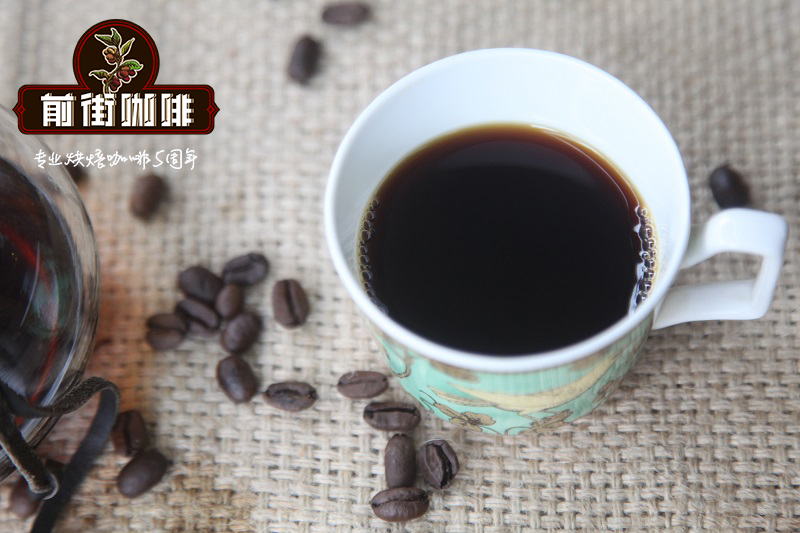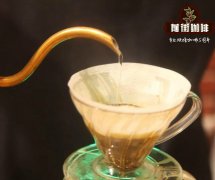Introduction to the characteristics of Hartmann production area introduction of Hartmann treatment

Professional coffee knowledge exchange more coffee bean information please follow the coffee workshop (Wechat official account cafe_style)
When it comes to Panamanian coffee tradition, most of the boutique coffee producing areas that are familiar to the public come from Boquete, but in recent years, coffee from Volcan has gradually emerged in the boutique market, and at the same time, a considerable number of estates have entered the best Panama competition (Best of Panama) or even won the championship. Generally speaking, the average annual rainfall in Walken is less than that in Borquette. At the same time, the geographical environment located to the west of the Baru volcano also gives coffee a stronger dried fruit flavor, sweetness and aroma than the Boguet region. In the early days, most of the cash crops such as fruits and vegetables were grown in Walken, and only a few farmers grew coffee, among which the pioneer of coffee cultivation in Walken belonged to the Hartman family, which was well-known in Panama.
The Eye of Water has always been a favorite area in Hartman Manor, which is located at a high altitude in the manor and its annual output is very rare. at present, only a few varieties of geisha, Kaddura and Kadui are planted in this area. the manor has a total area of 120 hectares, of which only 20 hectares are used as planting land. Another estate, named Santa Clara, is the site of Hartman's washing plant in addition to serving as a coffee farm and nursery plant. it is also an area where landowners experiment with the flavor of different varieties, with a total of more than ten varieties currently being tested and more if potential varieties are planned for future planting.
Using the honey treatment method, coffee farmers will select the ripe fruit and remove the core after screening, without removing the pectin (mucilage). The coffee seeds are dried directly with pectin, and the coffee seeds are dried on a tall bed to ensure more air flow, because the sticky pectin is still attached to the coffee seeds and is more prone to mildew. Hartman's coffee flavor after this honey treatment is more satisfactory. Sweetness increases and acidity decreases.
During honey processing, ripe cherries are picked, sorted and pulped, just like fully washed coffee, but after pulping, the mucus remains on the beans and is sent to dry. The honey coffee is dried on a raised bed to create a greater airflow during the drying process, as the mucus left on the beans provides an opportunity for damage. The result is richer, sweeter coffee with lower acidity.
Important Notice :
前街咖啡 FrontStreet Coffee has moved to new addredd:
FrontStreet Coffee Address: 315,Donghua East Road,GuangZhou
Tel:020 38364473
- Prev

What is the processing method of Brazilian coffee, the largest coffee producer in the world?
Professional coffee knowledge exchange more coffee bean information please follow the coffee workshop (Wechat official account cafe_style) Brazil is the world's largest coffee producing country accounts for about 30% of coffee production, but because Brazil is located in rainy forest areas, the land is flat with few high-altitude mountain forests, most of the coffee species are planted in low-altitude non-volcanic soil areas, and there is not too much shelter.
- Next

Hartman Flavor description: does Hartman taste good? Hartman hand punching step parameters
Professional coffee knowledge exchange more coffee bean information please follow the coffee workshop (Wechat official account cafe_style)
Related
- Does Rose Summer choose Blue, Green or Red? Detailed explanation of Rose Summer Coffee plots and Classification in Panamanian Jade Manor
- What is the difference between the origin, producing area, processing plant, cooperative and manor of coffee beans?
- How fine does the espresso powder fit? how to grind the espresso?
- Sca coffee roasting degree color card coffee roasting degree 8 roasting color values what do you mean?
- The practice of lattes: how to make lattes at home
- Introduction to Indonesian Fine Coffee beans-- Java Coffee producing area of Indonesian Arabica Coffee
- How much will the flavor of light and medium roasted rose summer be expressed? What baking level is rose summer suitable for?
- Introduction to the characteristics of washing, sun-drying or wet-planing coffee commonly used in Mantenin, Indonesia
- Price characteristics of Arabica Coffee Bean Starbucks introduction to Manning Coffee Bean Taste producing area Variety Manor
- What is the authentic Yega flavor? What are the flavor characteristics of the really excellent Yejasuffi coffee beans?

